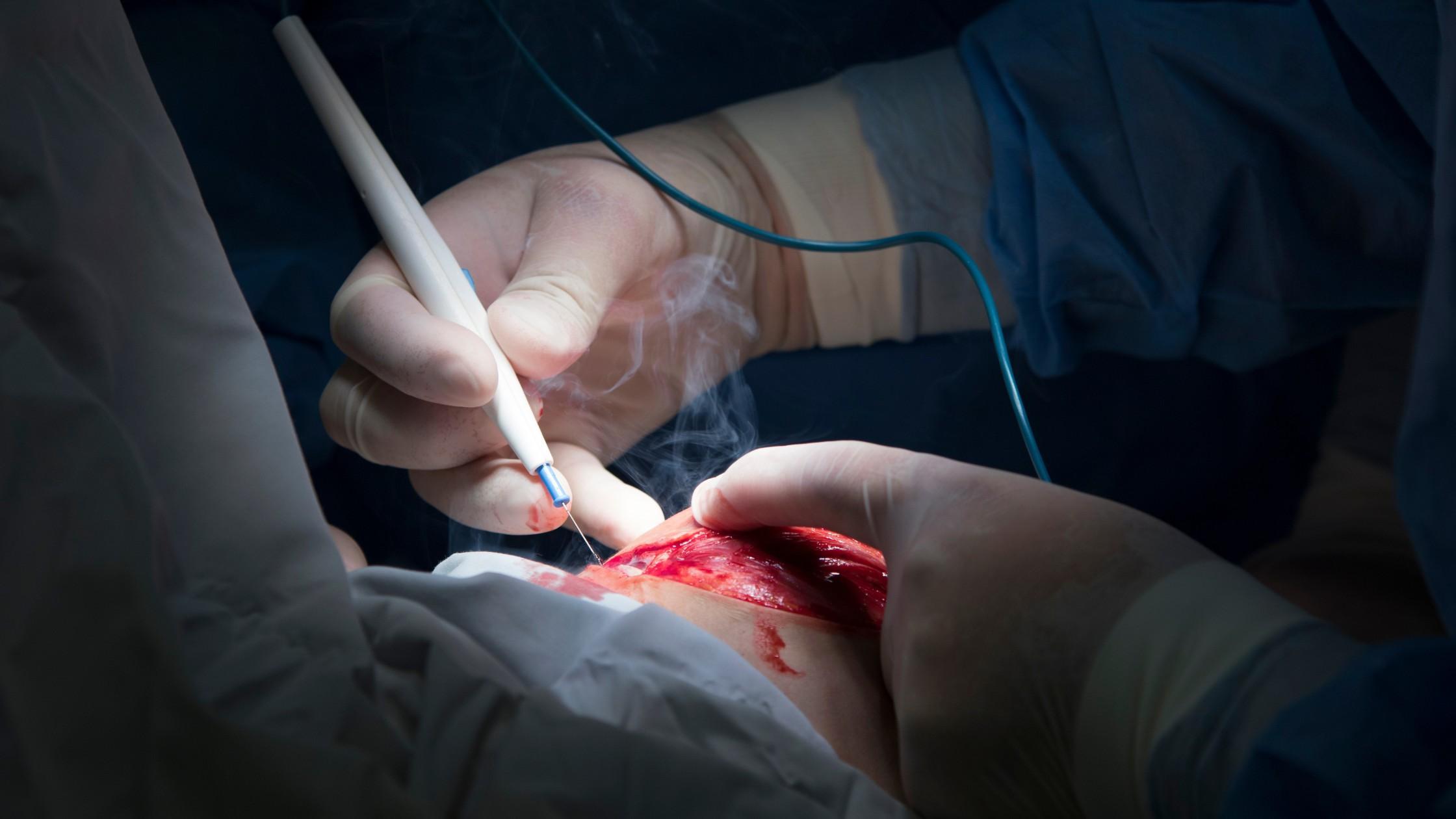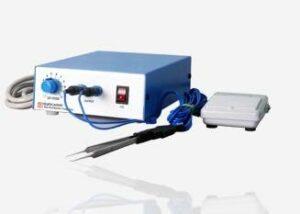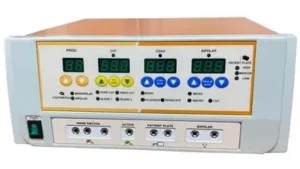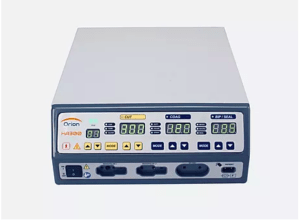Welcome to our blog where we delve into the fascinating world of Electrosurgical Units (ESUs) and explore how they are revolutionizing surgical practice for precision and safety. In this technologically advanced era, medical innovations have consistently pushed the boundaries of what is possible in the operating room, and ESUs stand at the forefront of these advancements.
Surgical procedures have undergone a remarkable transformation with the introduction of ESUs, as they offer surgeons a powerful tool to achieve unparalleled precision and enhance patient safety. By harnessing electrical energy, these units enable surgeons to perform intricate procedures with utmost accuracy. And while minimizing the risks associated with traditional surgical techniques.
Throughout this blog, we will uncover the principles behind electrosurgery, the core technology that drives ESUs, and how they have transformed surgical interventions. In addition, we will highlight the latest advancements in ESU technology, including advanced safety features and real-time feedback systems. These innovations further enhance the overall safety profile of ESUs, minimizing the risk of complications and maximizing positive patient outcomes.
Understanding Electrosurgical Units (ESUs)
ESUs have become an indispensable part of surgical suites, empowering surgeons to perform intricate procedures with utmost accuracy and minimizing the associated risks. These devices utilize electrical energy to cut, coagulate, and seal tissue during surgical interventions. By harnessing the power of controlled electrical currents, ESUs enable surgeons to achieve optimal surgical outcomes, reduce blood loss, and enhance postoperative recovery for patients.
The key principle behind ESUs lies in the process of electrosurgery, which involves the passage of high-frequency electrical currents through tissue. This controlled application of energy allows surgeons to precisely cut through tissue while simultaneously sealing blood vessels, reducing bleeding, and minimizing damage to surrounding structures.
One of the significant advantages of ESUs is their ability to minimize the risk of complications such as excessive bleeding and infection during surgery. By effectively sealing blood vessels as they cut through tissue, surgeons can maintain a clear surgical field and optimize visualization.
Electrosurgical Units have also used in surgical techniques such as laparoscopy and endoscopy. These procedures rely on small incisions and specialized instruments inserted through narrow access points. This not only leads to smaller incisions and reduced scarring but also facilitates faster recovery, shorter hospital stays, and improved patient comfort.
Types of Electrosurgical Units (ESUs)
Electrosurgical Units (ESUs) come in various types, each designed to meet specific surgical needs and procedures. Let’s explore some of the common types of ESUs:
- Monopolar ESUs: Monopolar ESUs are the most traditional and widely used type of ESUs. They consist of a generator an active electrode that is applied to the surgical site and a return electrode placed elsewhere on the patient’s body. In monopolar electrosurgery, the electrical current passes through the patient’s body from the active electrode, and the return electrode completes the circuit. Monopolar ESUs are versatile and suitable for a wide range of surgical procedures.
- Bipolar ESUs: Bipolar ESUs, as the name suggests, utilize bipolar electrosurgery. Unlike monopolar ESUs, bipolar ESUs use a forceps-like instrument that incorporates both the active and return electrodes within its tips. This allows for precise and localized energy delivery, making bipolar ESUs particularly useful in procedures that require fine tissue coagulation and sealing, such as neurosurgery, ophthalmology, and microsurgery. Bipolar ESUs offer a more controlled and focused energy delivery, minimizing the risk of damage to surrounding tissues.
- Vessel Sealing ESUs: Vessel sealing is a crucial aspect of surgical interventions, as it involves securely and effectively closing blood vessels to prevent bleeding. Traditional methods, such as ligatures or mechanical clips, require time-consuming maneuvers and may pose a risk of vessel slippage or residual bleeding. VSEUs, on the other hand, have emerged as a game-changer by utilizing advanced electrosurgical technology to seal vessels effectively, minimize bleeding, and enhance patient safety.
Features of Electrosurgical Units (ESUs)
- Monopolar Coagulation: It is a technique used in electrosurgery that involves the application of high-frequency electrical current to achieve hemostasis or coagulation of blood vessels and tissues during surgical procedures. In monopolar coagulation, the ESU generates electrical energy that is delivered to the patient’s tissue through an active electrode, typically in the form of a handheld instrument such as a coagulation pencil or forceps. The electrical current passes through the patient’s body to complete the circuit by using a return electrode placed elsewhere on the patient, usually on the thigh or back. During monopolar coagulation, the electrical current heats the targeted tissue, causing coagulation and sealing of blood vessels.
- Bipolar Tissue Sealing: It is a specialized technique used in electrosurgery to achieve precise and controlled sealing of blood vessels and tissue. It is a common feature found in Electrosurgical Units (ESUs) and is particularly useful in delicate surgical procedures where fine tissue sealing is required. Bipolar tissue sealing utilizes a specialized instrument that incorporates both the active and return electrodes within its tips. This instrument, often referred to as bipolar forceps or sealing forceps, allows for localized energy delivery and sealing of tissues without the need for a separate grounding pad.
Surgical Techniques Using Electrosurgical Units (ESUs)
- Laparoscopic Electrosurgery: In laparoscopic electrosurgery, small incisions are made in the abdominal wall, through which trocars or cannulas are inserted to provide access for the laparoscopic instruments. These instruments, including laparoscopic cameras, graspers, scissors, and electrosurgical devices, are then introduced into the abdominal cavity. Electrosurgical units used in laparoscopic procedures include both monopolar and bipolar instruments. Monopolar instruments, such as laparoscopic hooks or scissors, deliver electrical energy through an active electrode, while a return electrode is placed elsewhere on the patient’s body.
- Robotic-Assisted Electrosurgery: It represents an innovative and advanced approach to surgical procedures, combining the benefits of robotic systems and electrosurgical technology. Robotic-assisted surgery involves the use of robotic systems such as the da Vinci Surgical System to assist surgeons in performing complex procedures with enhanced capabilities. These systems consist of robotic arms equipped with surgical instruments and a console where the surgeon operates using hand and foot controls. The surgeon’s movements are translated into precise movements of the robotic arms, offering improved precision and stability during surgery.
- Dermatologic Electrosurgery: It refers to the use of specialized devices that apply high-frequency electrical current to the skin. This technique enables dermatologists to perform various procedures with accuracy and control. Electrosurgical devices used in dermatology typically include electrodes, such as electrosurgical knives, loops, needles, and electrodes with various shapes and sizes. These instruments deliver electrical energy to the skin, allowing for cutting, coagulation, fulguration (destruction of tissue), and desiccation (drying out of tissue). The electrical current interacts with the targeted tissue, leading to the desired therapeutic effect.
Safety Guidelines for Electrosurgical Units (ESUs)
Electrosurgery is a valuable tool in modern surgical practice but it requires strict adherence to safety precautions to minimize the risk of complications and ensure patient safety. Here are some important precautions to consider when using electrosurgical devices:
- Training and Education: Proper training and education are essential for all healthcare professionals involved in electrosurgery. Surgeons, nurses, and support staff should receive comprehensive training on the principles of electrosurgery, instrument handling, and safety protocols. Regular updates and continuing education should be pursued to stay informed about the latest advancements and best practices.
- Equipment Inspection and Maintenance: Before each use, thoroughly inspect the electrosurgical equipment for any signs of damage or malfunction. Ensure that all cables, connectors, and electrodes are in good condition.
- Patient Evaluation and Preparation: Conduct a thorough patient evaluation to assess any factors that may increase the risk of complications during electrosurgery such as underlying medical conditions, medications or implanted devices. Adequate patient preparation, including proper positioning, grounding, and skin preparation, is crucial to ensure optimal safety and effectiveness during the procedure.
- Fire Safety: Electrosurgery carries a risk of surgical fires due to the presence of heat, oxygen, and combustible materials. Take measures to prevent fires such as using non-flammable drapes and solutions minimizing the use of alcohol-based preparations and ensuring appropriate ventilation in the operating room. Have fire extinguishing equipment readily available and train the surgical team on fire response protocols.
- Electrosurgical Settings: Select appropriate electrosurgical settings for the procedure based on the tissue type, desired effect (cutting, coagulation, etc.), and patient characteristics. Ensure that the power output and duration of application are within safe limits to avoid unintended tissue damage. Familiarize yourself with the specific settings and modes of operation for the electrosurgical unit being used.
- Grounding Pad Placement: Proper grounding is crucial to ensure the safe and effective delivery of electrical energy during electrosurgery. Always use the appropriate grounding pads or electrodes and ensure their proper placement on the patient’s body. Inspect the integrity of the grounding system and verify appropriate electrical continuity before initiating the procedure.
- Surgeon and Staff Protection: It is important to take measures to protect the surgical team from potential electrical hazards. Ensure that all personnel in the operating room are aware of the procedure and potential risks.
Emergency Preparedness: Despite adherence to safety precautions, complications can still arise during electrosurgery. Be prepared for emergencies by having a well-equipped emergency cart or trolley readily available in the operating room. Train the surgical team on emergency response protocols, including the management of electrical burns, thermal injuries, or complications related to electrosurgery.
Troubleshooting & Maintenance of Electrosurgical Units (ESUs)
It is essential to ensure the proper functioning and safety of ESUs. Here are some important considerations.
- Manufacturer Guidelines: Familiarize yourself with the manufacturer’s guidelines and recommendations for troubleshooting and maintenance. Each ESU may have specific instructions regarding troubleshooting common issues and routine maintenance procedures. Follow these guidelines closely to avoid any potential damage or safety hazards.
- Regular Inspections: Conduct regular inspections of the ESU to identify any signs of wear, damage, or malfunction. Check the power cords, connectors, cables, and electrodes for any visible damage. Inspect the control panel, buttons, and displays for proper functioning. Address any issues promptly by following the manufacturer’s instructions or contacting customer support.
- Performance Testing: Periodically perform performance testing on the ESU to ensure its accuracy and proper functionality. This may involve checking the power output, waveform quality, and the response of various modes or settings.
- Calibration: Follow the manufacturer’s recommended calibration schedule for the ESU. Calibration ensures that the device is providing accurate power output and measurements. Professional calibration services may be required, and it is important to maintain records of calibration for auditing and compliance purposes.
- Electrode Maintenance: Proper care and maintenance of electrodes are crucial for optimal performance and safety. Inspect them for any damage or deterioration, and replace them if necessary. Ensure that the electrodes are properly stored to prevent contamination or damage.
- Grounding System: Verify the integrity of the grounding system regularly. Check the connections of the grounding pad or electrode and ensure that they are securely attached to the patient’s body. Inspect the grounding cables and connectors for any signs of wear or damage. If there are any issues with the grounding system, address them immediately to prevent electrical hazards.
- User Training: Ensure that all personnel operating the ESU are properly trained on its use, troubleshooting procedures, and maintenance protocols. Provide comprehensive training on safe handling, cleaning, and storage of the device. Encourage staff to report any issues or abnormalities they observe during use promptly.
- Documentation and Records: Maintain thorough documentation of all maintenance, troubleshooting, and calibration activities performed on the ESU. Keep records of inspections, repairs, replacements, and testing results. This documentation is important for tracking the history of the device, ensuring compliance with regulations, and facilitating troubleshooting in the future.
- Professional Assistance: If you encounter complex issues or are unsure about troubleshooting or maintenance procedures, contact the manufacturer’s customer support or a qualified service technician. They can provide guidance, diagnose problems, and perform necessary repairs or servicing.
Electrosurgical Units (ESUs) From Leading Indian Manufacturers
Aurocautery
Aurocautery is a cutting-edge bipolar cautery machine manufactured and supplied by Aurolab in India. This high-quality device is specifically designed for coagulation during ophthalmic surgery, ensuring controlled performance and smooth coagulation. By utilizing a low electrosurgical unit, Aurocautery effectively arrests blood vessels, providing surgeons with enhanced precision and reliable outcomes. The device incorporates advanced features, including high-frequency solid-state circuitry, reusable forceps, erasers, and cables.
Activating the high-frequency power can be conveniently controlled by a foot switch, offering surgeons seamless control during procedures. Audible indications are integrated into the Aurocautery, further enhancing its usability. With a dial for variable power output featuring a 7-segment digital display, surgeons can easily adjust the settings according to their specific requirements.
BIOHEARTZ – 400W
Manufactured by Monarch Healthcare, BIOHEARTZ – 400W is a cutting-edge electrosurgical unit that stands as a leading product in India’s medical equipment market. This advanced device showcases Monarch Healthcare’s commitment to delivering high-performance products to the global healthcare industry.
BIOHEARTZ – 400W features a feedback-controlled response system, automatically disconnecting energy delivery after the seal cycle is completed. With its lowest cutting effect and spray coagulation capabilities, this unit provides surgeons with a smooth and pure cut, promoting superior surgical outcomes. The bipolar output possesses non-sparking characteristics, ensuring the utmost safety during procedures. Additionally, the BIOHEARTZ – 400W offers a good hemostatic effect, further enhancing its efficacy as an essential tool in surgical interventions.
Nova 400 DP Electrocautery Unit
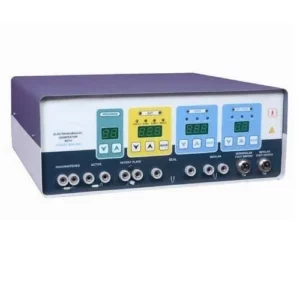 The Nova 400 DP Electrocautery Unit, manufactured by Life Support Systems India, is a portable and versatile high-frequency electrosurgical generator designed for precision cuts in delicate surgeries. This state-of-the-art unit is equipped with both bipolar and monopolar electrocautery systems, providing surgeons with flexibility and precision. The Nova 400 DP includes essential components such as an electrosurgical pencil and a smoke evacuator system, ensuring a safe and controlled surgical environment.
The Nova 400 DP Electrocautery Unit, manufactured by Life Support Systems India, is a portable and versatile high-frequency electrosurgical generator designed for precision cuts in delicate surgeries. This state-of-the-art unit is equipped with both bipolar and monopolar electrocautery systems, providing surgeons with flexibility and precision. The Nova 400 DP includes essential components such as an electrosurgical pencil and a smoke evacuator system, ensuring a safe and controlled surgical environment.
The unit’s programmable and consistent output offers surgeons the ability to perform precise cuts, while various modes, including Pure Cut Two Blend Modes, Endo Cut, True Spray, Fulgurate, and Desiccate Coag modes, enable varying degrees of hemostasis and rapid coagulation. The Nova 400 DP Electrocautery Unit is not only suitable for general surgeries but also finds application in veterinary and minimally invasive procedures. With a focus on customer satisfaction, we guarantee timely delivery of both the Nova 400 DP and Nova 300 DP Electrocautery Units.
Orion HA400
Orion HA400, manufactured by Orion Medical Technologies, represents the pinnacle of microprocessor-based electrosurgical units in the Indian medical equipment market. Orion Medical Technologies is known for its exponential growth and commitment to producing high-performance hospital equipment. The HA400 system, available with optional vessel sealing capabilities, is a testament to Orion’s dedication to innovation.
The unit’s cutting-edge technology utilizes a control system built on two microprocessors, ensuring exact power delivery for reliable cutting and coagulation across all tissues. Orion HA400 stands out with its unique randomized spray coagulation modes, offering homogeneous, superficial, and faster coagulation over larger areas. Additionally, this versatile electrosurgical unit features an optional internet remote programmable/calibration system, empowering surgeons with convenient control and customization. With Patient Return Electrode Monitoring, the Orion HA400 prioritizes safety by providing an alarm system to prevent return electrode site burns.
400 Dexter
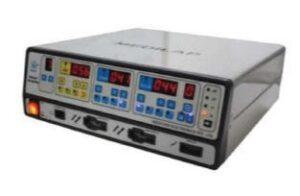 The 400 Dexter manufactured by YASHIKA ENTERPRISES is an advanced electrosurgical unit renowned for its exceptional performance and safety across various demanding surgical procedures. The unit’s design focuses on minimizing electrode sticking and dragging in different types of tissue, ultimately reducing tissue damage and improving patient outcomes.
The 400 Dexter manufactured by YASHIKA ENTERPRISES is an advanced electrosurgical unit renowned for its exceptional performance and safety across various demanding surgical procedures. The unit’s design focuses on minimizing electrode sticking and dragging in different types of tissue, ultimately reducing tissue damage and improving patient outcomes.
One of its standout features is the automatic adjustment of power settings as the tissue changes, significantly reducing the frequency of manual adjustments during procedures. This adaptive capability not only enhances efficiency but also minimizes the risk of lateral tissue damage caused by sparks and sharing-free power. The 400 Dexter excels in delivering precise and clean cutting and coagulation, promoting quicker patient recovery times. Moreover, the unit is engineered to minimize RF distortion in other operating room equipment.
The unit’s randomised spray mode offers versatility, and it also provides two independent power activation options for monopolar output, with foot switch or hand auto operation. Additionally, separate bipolar generator options are available, further expanding the unit’s capabilities. With the ability to store up to 12 program memories for different applications. 400 Dexter enables specialists to customize settings based on their patients’ specific needs.
Medzell – The Gateway to Cutting-Edge ESUs and Beyond
As we conclude this blog Electrosurgical Units, techniques, safety precautions, and regulatory standards, we invite you to explore the future of surgical practice with Medzell. Medzell is a futuristic B2B platform that promotes Indian medical devices, including state-of-the-art ESUs, in emerging markets. With Medzell’s support, you can access cutting-edge technology, stay informed about the latest advancements, and take your surgical practice to new heights. Unlock the potential of Electrosurgical Units and embrace the innovative world of surgery with Medzel
